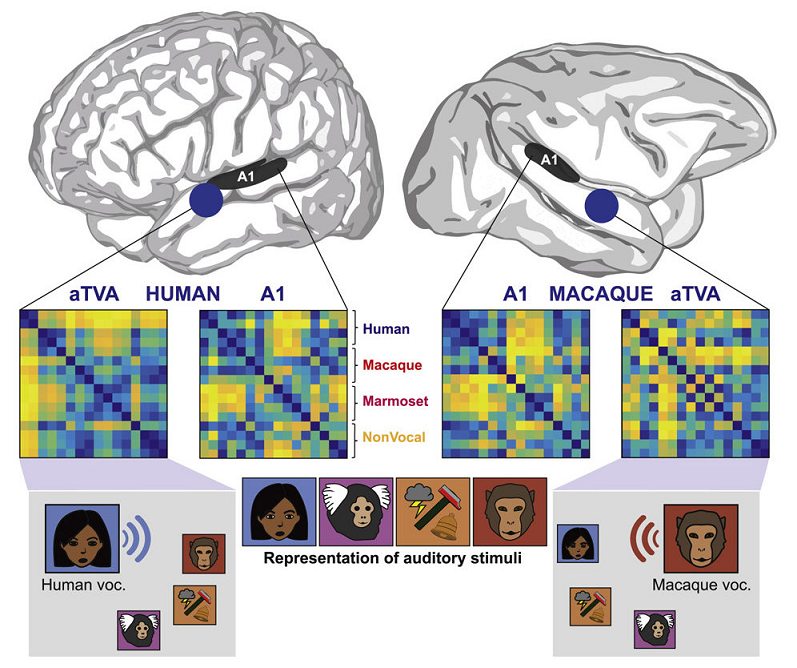Une publication dans Current Biology pour BANCO
Functionally homologous representation of vocalizations in the auditory cortex of humans and macaques
Authors: Clémentine Bodin ; Régis Trapeau ; Bruno Nazarian ; Julien Sein ; Xavier Degiovanni ; Joël Baurberg ; Emilie Rapha ; Luc Renaud ; Bruno L.Giordano ; Pascal Belin
– Macaques and humans show voice-selective anterior temporal voice areas (aTVA)
– Similar representation of sounds are present in primary auditory cortex of both species
– Representational similarity analysis (RSA) reveals that aTVAs categorize conspecific vocalizations apart from other sounds
– There is a functional homology in the high-level auditory cortex of humans and macaques

How the evolution of speech has transformed the human auditory cortex compared to other primates remains largely unknown. While primary auditory cortex is organized largely similarly in humans and macaques,1 the picture is much less clear at higher levels of the anterior auditory pathway,2 particularly regarding the processing of conspecific vocalizations (CVs). A “voice region” similar to the human voice-selective areas3,4 has been identified in the macaque right anterior temporal lobe with functional MRI;5 however, its anatomical localization, seemingly inconsistent with that of the human temporal voice areas (TVAs), has suggested a “repositioning of the voice area” in recent human evolution.6 Here we report a functional homology in the cerebral processing of vocalizations by macaques and humans, using comparative fMRI and a condition-rich auditory stimulation paradigm. We find that the anterior temporal lobe of both species possesses cortical voice areas that are bilateral and not only prefer conspecific vocalizations but also implement a representational geometry categorizing them apart from all other sounds in a species-specific but homologous manner. These results reveal a more similar functional organization of higher-level auditory cortex in macaques and humans than currently known.
Référence complète: Functionally homologous representation of vocalizations in the auditory cortex of humans and macaques: Current Biology (cell.com)